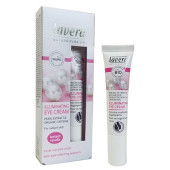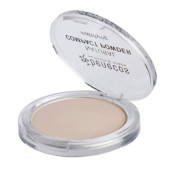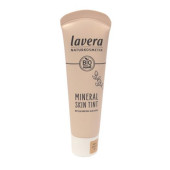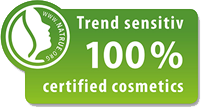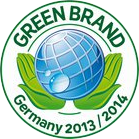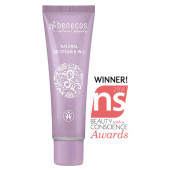Below is an English translation of the article published in the ÖKOTEST magazine (translated means Ecological Test), an influential consumer advocate magazine in Germany that evaluates numerous products for public health and safety. It was in this article where Lavera won 1st place, ahead of 2nd place Weleda, 3rd place Wala (Dr. Hauschka) and mainstream brands such as Estée Lauder and L'Oréal after a review of over 1800 cosmetic products.
| Review: | Cosmetic Manufacturers and Brands |
| Published: | 03/10/2008 |
| Publication: | ÖKOTEST Magazine |
What Do You Mean By Luxury?
 Who are the best? To find out, we evaluated cosmetic tests from the past four years, determined average scores, and compared the results of the companies with each other.
Who are the best? To find out, we evaluated cosmetic tests from the past four years, determined average scores, and compared the results of the companies with each other.
One cannot say that we are particularly popular in the cosmetic industry. The ÖKOTEST principle to advocate cosmetics without controversial and questionable substances does not sit well with a lot of manufacturers. After all, it is much easier and cheaper for the industry to use known substances rather than to replace aggressive preservatives with less problematic substances and formulations. We have sent more than 1,800 cosmetic products to our laboratories for our monthly comparative tests in the ÖKOTEST magazine between 2004 and March 2008 and had them tested them for questionable substances. Here, our designated laboratories checked about 80 product groups, ranging from all-purpose cream to toothpaste.
For the big comparison, we did not include all products; we used only those companies and suppliers who were represented with at least ten products in our tests. Thus, a total of 1,545 products from 33 different companies were used in the overall evaluation. For most products, we stated the manufacturer or the corporate group responsible for the brands as the supplier. The store brands of discounters, drugstores and supermarkets, however, were assigned to the trading companies, e.g. Schlecker or Aldi.
The Test Result
The entire spectrum is present in the average scores. Amongst 33 sellers or brands, four received "very good" grades, two "good" and twelve “satisfactory”. Almost half, that is to say, 15 suppliers or brands, tested worse than a score of 3.5.
Natural cosmetics companies such as Laverana (1.17), Weleda (1.21), Wala (1.32) and Logocos (1.44) shine with "very good" grades. Most products manufactured by these companies do not contain unsafe substances. In general, they carry the BDIH logo, which certifies them as natural cosmetics and guarantees strict examinations – which in turn is also noticeable in the ÖKOTEST testing scores.
Really disastrous is the outcome for the Colgate Palmolive Company. They were given the worst average score in the test for their brands Colgate, Dentagard, Gard and Palmolive: a 5.36. Directly in front placed another major player in industry: The company Lóreal with their average grade of 5.33. The German Beiersdorf Group supplies the mass market with brands such as Nivea, Florena and 8x4. Compared with the rest of the majors, Beiersdorf scored best with a 3.44 as the average of the tested Products.
Groceries and discounters like Aldi and Lidl usually test "very good". Cosmetics offers a different picture: Aldi Sud (3.45) and Lidl (3.64) can be found in the back of the midfield, Aldi Nord (2.97), Plus (2,72) and Penny (3.00) are not much further ahead. The store brands of drugstores score only middle of the line results. Rossmann (2.51) and Dm (2.58) are here better off than Schlecker (3.02).
The cheap ones do not shine with crowning achievements but are by far not as bad as the really expensive luxury brands. Chanel flunks with 4.88, Estée Lauder, responsible for the Clinique brand, is not much better with 4.08. Coty, a company, which among other things, distributes many perfumes such as Davidoff, Calvin Klein or Joop, even receives the average low score of 5.10.
Brands Effect On The Brain
Why do we buy expensive Chanel make-up instead of no-name discounter products? With help of the functional MRI, which transforms metabolic activity in the brain into images, researchers observed, which brain areas are stimulated when looking at brands or advertising. One finding: known brands activate brain regions responsible for positive feelings and rewards. People with a strong affinity to a certain brand show a reduction of activity in the brain whenever it comes to rational decisions. In exchange, the blood flow in areas with emotional character increases. People who are brand neutral are not affected. Marketing specialists would say: "Strong brands relieve the thinking process and ensure that purchasing decisions are made from the gut." Those who are crazy about a particular brand, sometimes buy without sense and reason.



